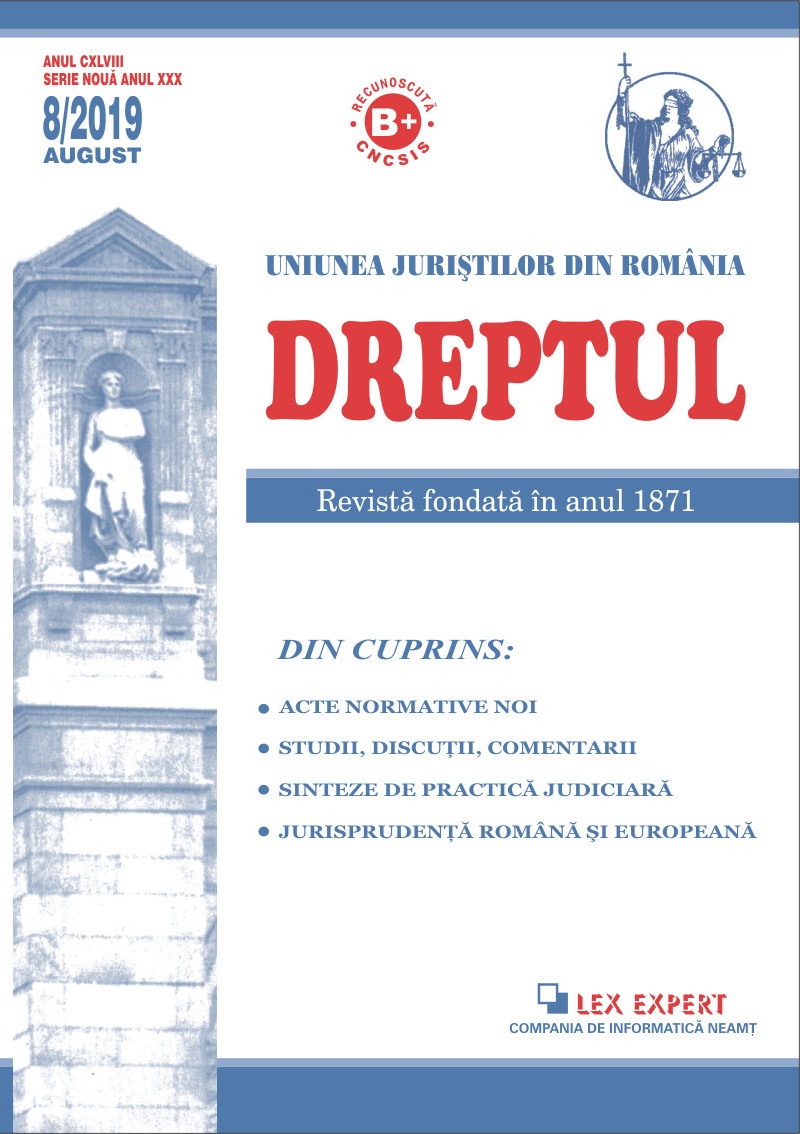Forța probantă a înscrisurilor autentice
Probative force of the authentic documents
Author(s): Maria FodorSubject(s): Civil Law
Published by: Uniunea Juriștilor din România
Keywords: authentic document; probative force; conversion of the null document as authentic document;
Summary/Abstract: The authentic document is the document drawn up or, as the case may be, received and authenticated by a public authority, by the notary public or by another person invested by the state with public authority. Likewise, any other document issued by a public authority and to which the law confers this character is authentic. In other words, in order to be qualified as „authenticated document”, a document must meet the following requirements: a) be drawn up or, where appropriate, received and authenticated by a public authority, a notary public or by another person invested by the state with public authority; b) the instrumenting agent must be competent from material and territorial point of view to instrument the document; c) to be drawn up in compliance with the formalities required by law or, as the legislator specifies, „in the form and under the conditions established by law”.The legislator devotes the field of authenticity to the document, specifying the elements which relate to authenticity, namely: establishing the identity of the parties; expressing their consent about their content; the signature of the parties and the date of the document [Article 269 (1) second sentence of the Civil Procedure Code, Article 90 (2) of the Law No 36/1995]. The signature of the public servant confers authenticity to the document on which it is given. It follows that it falls into the field of authenticity what the instrumenting agent finds ex propriis sensibus.The document which by its form and appearance (the signature of the public notary or the public servant, the seal of the authority, the registration number, etc.) has the aspect of an authentic document drawn up regularly enjoys the presumption of authenticity and validity, and the contesting party can only fight against it by means of the procedure of registration of forgery.If the document presents irregularities, shortcomings, material or formal defects, which clearly demonstrate its falsity, it does not enjoy the presumption of authenticity, and the court may remove it on the basis of its own findings, without proceeding with the registration of forgery.In relation to the probative force of the authentic document, the legislator distinguishes between the personal findings of the instrumenting agent and the statements of the parties included in the document. Thus, the mentions in the document, which constitute the personal findings of the instrumenting agent give full evidence towards any person, until the authentic instrument is declared as false, by means of a procedure which may entail the criminal liability of the instrumenting agent who mentioned circumstances or statements which he did not know personally or which he distorted. On the other hand, the statements of the parties contained in the authentic document give evidence, until proven otherwise, both between the parties and to any other persons. The probative force of these statements comes from the signature of the parties. Therefore, regardless of the form of the document, it is natural that these statements have the same probative force.Likewise, the mentions in the document which are not the principal subject-matter of the act, but which are directly related to the legal relation between the parties also give evidence, unless proved otherwise.The other mentions in the document, which are not directly related to the legal relation of the parties, constitute, among these, a prima facie evidence, which makes admissible the administration of other means of evidence: testimonies of witnesses, presumptions. As to third parties, the mentions in the document which are not directly related to the legal relationship of the parties are legal facts, which can be proved or contested by these by using any means of evidence.The authentic document is affected by absolute nullity when: the forms imposed by the law for being validly drawn up have not been complied with; it has been drawn up by an incompatible person; it has been drawn up by an incompetent person or by overriding authority.The null document as authentic document is not lacking any probative force. If it is signed by the parties, the null document as authentic document gives full evidence as document under private signature. In case it is not signed by the parties, the null document as authentic document is only a prima facie written evidence between them. Conversion is possible only in case the authentic form is not required by law ad validitatem, because, otherwise, the nullity of the document also leads to the nullity of the legal act, so that the question of proof should no longer be raised.
Journal: Revista „Dreptul”
- Issue Year: 2019
- Issue No: 08
- Page Range: 69-97
- Page Count: 29
- Language: Romanian
- Content File-PDF

